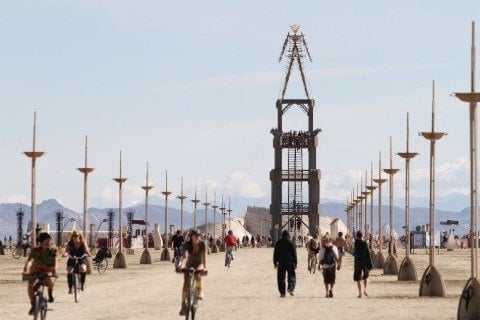
The Carnival in Rio de Janeiro is a festival held every year before Lent; it is considered the biggest carnival in the world, with two million people per day on the streets. The first Carnival festival in Rio occurred in 1723. The typical Rio carnival parade is filled with revelers, floats, and adornments from numerous samba schools which are located in Rio. A samba school is composed of a collaboration of local neighbours that want to attend the carnival together, with some kind of regional, geographical and common background. There is a special order that every school has to follow with their parade entries. Each school begins with the "comissão de frente", that is the group of people from the school that appear first. Made of ten to fifteen people, the comissão de frente introduces the school and sets the mood and style of their presentation. These people have choreographed dances in elaborate costumes that usually tell a short story.
| Also called | "The biggest show on Earth"(Portuguese: O maior show da Terra) |
| Type | cultural, religious |
| Significance | Celebration prior to fasting season of Lent. |
| Celebrations | Parades, parties, open-air performances |
| Begins | Friday before Ash Wednesday (51 days to Easter) |
| Ends | Ash Wednesday noon (46 days before Easter) |
| Frequency | annual |
| Related to | Carnival, Brazilian Carnival, Ash Wednesday, Lent |
關於Rio Carnival
With an annual attendance of over two million people, the Carnival in Rio de Janeiro, Brazil is considered the largest carnival in the world. It takes place on the Friday before Ash Wednesday, prior to Lent. The festivities include parades with elaborate floats and numerous music and dance performances.
Rio Carnival的成就
Each year, a Corte Real (Royal Court) is assembled for the celebration, composed of a King Momo, a Queen of Carnival and two princesses. They act as the center points of the parade celebration.
您不知道JRio Carnival的熱門事實
Rio Carnival Category.. Brazilian Carnival - The Carnival of Brazil is an annual Brazilian festival held the Friday afternoon before Ash Wednesday at noon, which marks the beginning of Lent, the forty-day period before Easter.






